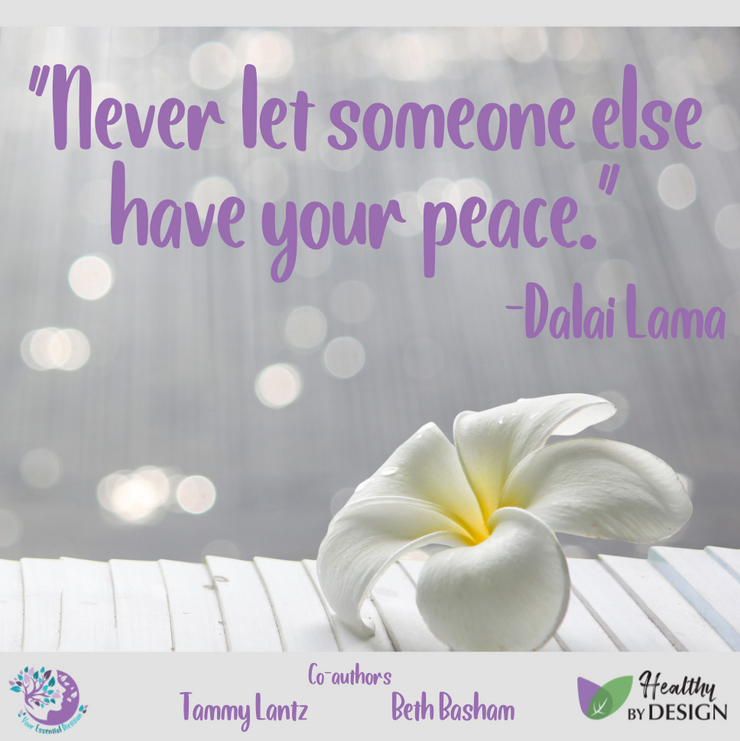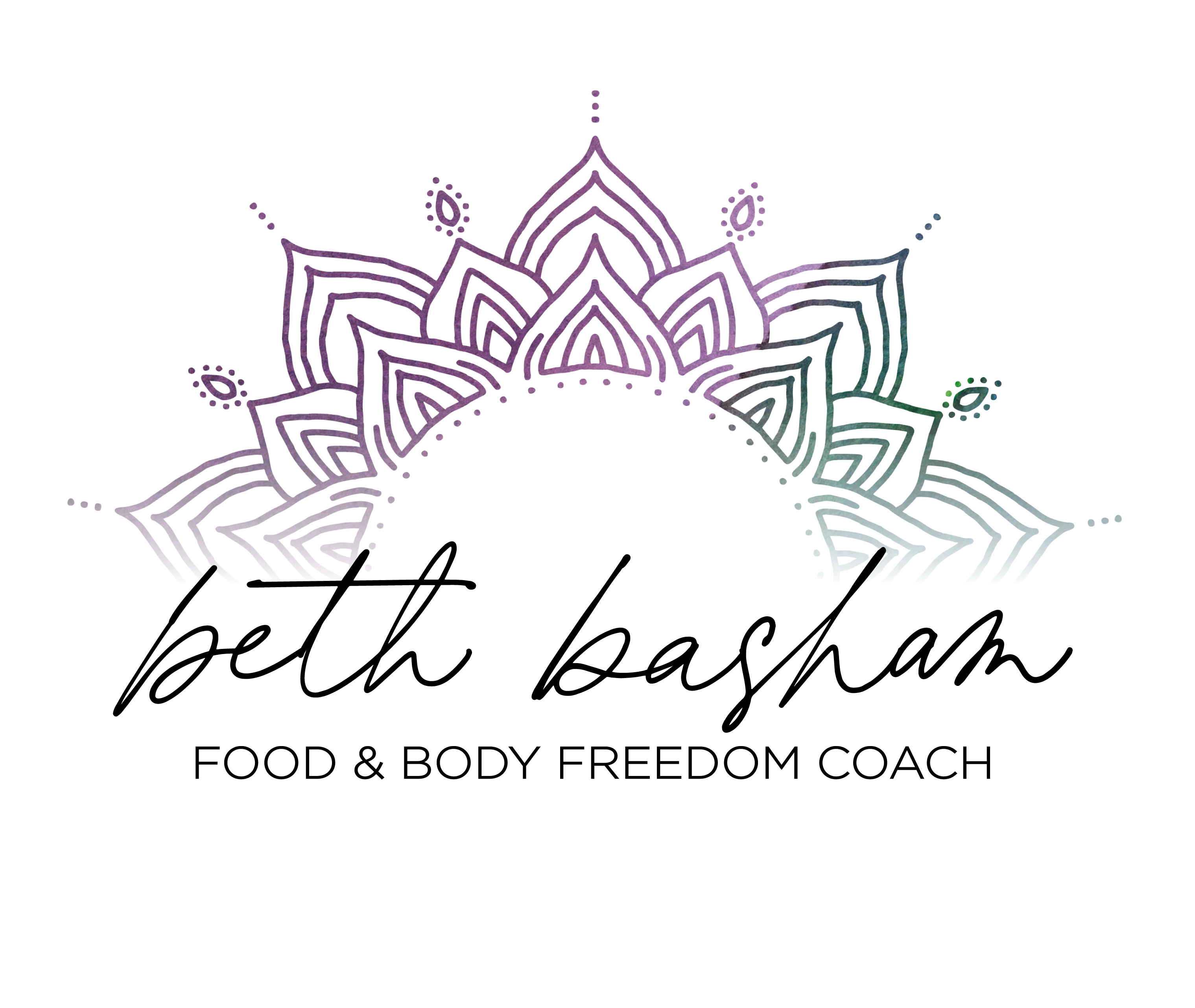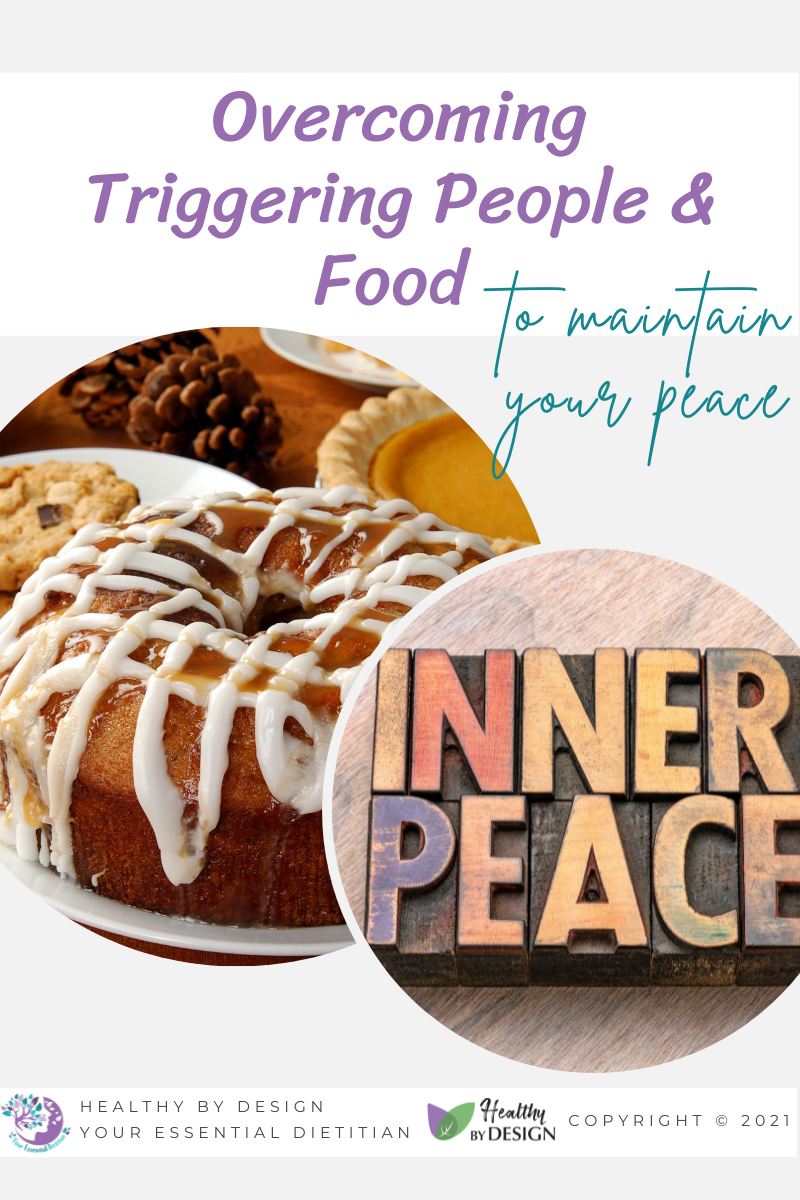Co-Authors Tammy Lantz & Beth Basham
You walk into your relative’s house full of anticipation and excitement for the holiday only to be met with comments such as “Hi honey, looks like you’ve lost/gained weight!” or “Did you see your Aunt May? She’s gotten huge!” or “Have you gained the COVID 19 too?”
Or maybe the comments are less direct such as “I am starving, I cannot wait to eat. I am beyond stuffed, aren’t you?” or “After today, I am going to have to run 10 miles.”
It may even feel intrusive with comments like “What diet are you going to do after the holidays?” If you tell them you are no longer dieting, how do you fit in? What will they think of you? What will you say?
All these food and body-related comments can bring up many thoughts and feelings for those on the journey of healing their relationship with food and body. And while these comments are not usually intended to cause harm, they often do– even if subtly, over time.
If we are to be successful long-term on this journey, we need to know how to gracefully manage them to maintain our inner peace and sanity.
And, what about all the fancy holiday foods? So many “off-limit” items are displayed around corners of the home and filling the plates of your holiday feast. These foods are often put on a pedestal because “you only get them one time per year”.
Between people and food itself, we can feel paralyzed or defeated leading us to reach for diet culture solutions such as restriction or binging.
But, it doesn’t have to be this way…
We’ve been conditioned by society and life experience to see food and comments by people as a threat to our safety and security as a human.
Recognizing Body Cues
In nature, threats are perceived by our bodies as life-threatening and quickly put us into survival mode, activating either our fight or flight nervous system response or our freeze or fawn response.
You know, those clammy hands and that rapid heartbeat you get when you walk into your in-laws (or any other dreaded holiday setting)? Even the thought of an impending confrontation can elicit these physical responses. In other words, our nervous system can be activated even before walking into that situation simply through our thoughts.
This is your body responding to an impending threat, whether it’s perceived or real. And your habit brain recognizes the familiar situation, so it sends out the signal on how to respond, encouraging you to react the way you always have.
Our body is talking to us, letting us know what is happening before we consciously know what is happening, but we often don’t see it that way…
We want to RUN or HIDE and we’re never taught how to see these body cues as signals from the body we can learn and grow from. Nor have we been taught effective ways to change our habitual response patterns that we’ve been following for years or decades.
Can you imagine…
Going to your in-laws (or any place), hearing a comment about your body or someone else’s, and observing your body’s response as information rather than feeling the need to run away?
Or, sitting down in front of a plate of delicious, previously “forbidden” foods and feeling empowered instead of terrified?
Many women cannot until they learn to become empowered eaters who confidently know how to set boundaries with loved ones and honor their inner attunement with food.
What many women don’t know is that this process is about leaning INTO the tough emotions instead of running away from them and…
Seeing the physical reactions of the body as a curious observer who can DECIDE what to do for themselves from a place of love instead of fear.
Recognizing Triggers & Your Own Stress Response
Food & people can trigger intense emotions within you, seemingly out of nowhere! And it makes complete sense if you understand the biology of your body and brain…
Now is the time to change that!
Let’s chat more about HOW to do that.
First, it is important to recognize that triggers are your best opportunity to evolve into a fully empowered human. You don’t grow from something that was easy or thoughtless, do you?
Consider when you learned to ride a bike. You didn’t ride effortlessly on your first try. You fell a few times before gaining your balance and maybe even got a scuffed knee, right?
Holidays and other “triggers” are likely one of your biggest sources of frustration and anger on your journey of healing which directly takes you away from the feelings of peace, joy, love, etc. Inside your body, they are also a huge source of stress.
Therefore, the next step is practicing self-awareness around what the stress response looks like in your body. The stress response is not just a feeling, it is an actual physiological response. For most people, heart rate increases, the functionality of the gastrointestinal system decreases, and neurons of the brain misfire or slow down. All of these physiological body responses can leave us feeling anxiousness in our chest, sweaty, breathing abnormally, with knots in our stomach, increased bathroom urgency, and/or increased brain fog.
The more you practice recognizing your stress response by listening to the sensations within your body, the more easily you can identify early signs and take action to ease your nervous system. Over time, you will also be able to “get out ahead of it” through discovering self-care practices that prevent you from having a heightened stress response.
You may think the next logical step would be to avoid the food or the person triggering you. You may even think if the food could just not be there, then you could maintain control of your emotions. Then, when it comes to triggering people or comments, you might think… “if the other person could just change, then I could be happy.”
Any of those sound familiar?
It’s totally normal to be thinking and feeling this way. This is how we have been conditioned afterall.
But here is a truth bomb, the other person is likely not feeling triggered (otherwise they would not be doing XYZ behavior) and food has no consciousness, which means it does not have feelings. So even though you think your food talks to you, it is just YOU talking to you.
In other words, triggers are about US, not the other person or the food.
To recap, food and people are not triggers. Food and people (external factors) may activate a trigger that are reactions from within us (internal). Therefore, the only way to overcome a trigger is to overcome what that trigger represents inside us and work through what it is attempting to teach us in the moment.
Triggers are mirrors. They show us how we are showing up in the world…
How do you respond to triggers? Think about the last time you were triggered by something or someone. What judgments did you make about that situation or the people you interacted with?
Did you immediately go into blame, resulting in anger, frustration or maybe even grief?
Now think about that same situation, but stand back as if you are an observer to the situation instead of being in it.
What do you see now?
How is your body responding differently?
What emotions are you experiencing?
Did the simple act of stepping into being the observer lessen the feelings of sorrow and lower the lingering feelings of activation?
What if you operate from a place of recognizing the judgment and letting it go?
Finding Internal Peace & Practicing Self-Compassion
Something to keep in mind with all of this – Finding and holding your own internal peace, regardless of the external situation, is a practice. It is not something you read about here and magically change in an instant. So be compassionate with yourself as you are learning and navigating this journey.
Speaking of compassion… One of the most impactful things you can practice is compassion towards others and how they too have been negatively impacted by diet culture. All those “comments” that come from friends, family, or the random person you don’t know come from a place of diet culture influence. Once you recognize this and actively practice compassion towards them, the compassion will return to you, helping you find greater peace at that moment.
If any of this information is activating other triggers within you or you are not sure how to start, it is highly recommended to work alongside a practitioner who can help you navigate this with a holistic lens. For a comprehensive dive into the healing journey, I recommend applying to work with us inside the safe container of the Peace with Food and Soul group coaching program (learn more at BethBasham.com) or search the intuitive eating counselors directory for a counselor that can support you.
5 Steps to Overcoming Food & Triggering People
If you feel that you can start navigating this on your own, here is one method you can use when experiencing trigger activation from foods:
Step 1: Make a “move your attention” plan.
Determine a distraction task to be used later. It doesn’t have to be anything significant. It could be as simple as changing your laundry, doing dishes, making a call, going for a walk, checking your email, etc.
Step 2: Portion out a neutral amount of food.
Portion out a neutral amount of the food you are desiring, then put the container or serving dish away (if possible). Ideally, it will be about enough to satisfy you but not so much that it will make you uncomfortably full. It is ok if you are not certain about this step. This too is a practice and each day may result in different findings.
Step 3: Enjoy your nourishment.
- Sit down undistracted (or in a calm state) to enjoy the food you portioned out in step 2.
- Take 3 slow breaths breathing down into your stomach
- Connect to the gratitude you may have for that food and remind yourself that this food is available at any time if you chose.
- Take notice of all five senses while eating and enjoy it without guilt.
If desired, take a check-in break to evaluate any body signals, thoughts, etc.
Step 4: Distract yourself.
When you are done eating your nourishment, which may include a food that has activated a trigger inside you in the past, gently nudge yourself to do the task you set in step 1. Note: your habit brain is likely in full gear, it may be screaming “give me more!” because this is what you have always done. There is no need to resist this, just move your attention again to the plan.
It is crucial that you do step 1 before you start eating. Otherwise, your brain may be too clouded to resist going back for more. It’s also important in this step to avoid using restrictive self-talk like “this is all I can have” or “I can’t or shouldn’t have more.” What you resist will persist. Therefore, you aren’t saying no, you’re just saying not now. This all helps teach the brain that it is okay to delay gratification.
Step 5: Re-evaluate.
After finishing the distraction task, re-evaluate if you want another portion and repeat these steps if necessary. The point isn’t to deprive yourself of what you want but rather to distract yourself so you can delay eating until you feel safe and confident with nourishing yourself.
This technique is meant to be used to prevent yourself from overeating any foods that activate a trigger inside you and becoming uncomfortably full. It is NOT intended to be used to under eat or control calorie intake. Honor your hunger and maximize your personal satisfaction factor.
In closing and your transformational takeaway… is it more important to know why you are triggered or to figure out what you can do about it?
Side note: We actually reviewed this exact topic in November at our Monthly Empowerment Training. If you’d like to join us in our December Empowerment Training, “How to Not Step Back into Diet Culture with the New Year” details can be found in the Mindful & Intuitive Eating Facebook Group, as well as on Instagram @your_essential_rd.
Act quickly – Registration is open now and we’d love to see you there!


